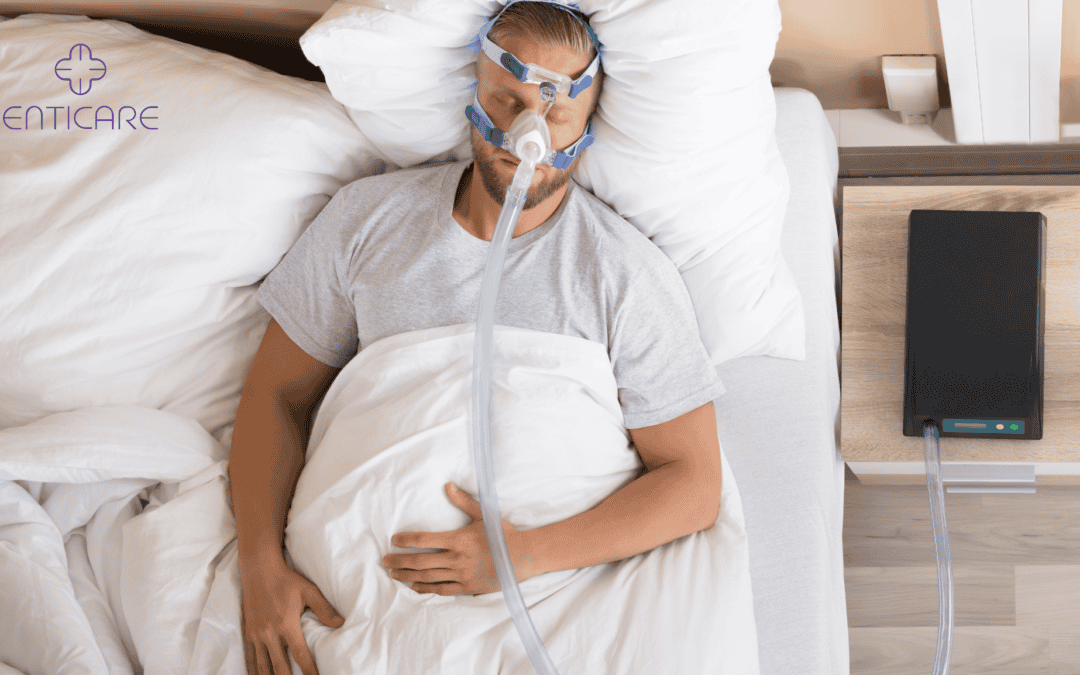The Department of Transportation (DOT) takes the health and safety of commercial drivers seriously, which includes ensuring that drivers with sleep apnea, a serious sleep disorder, manage their condition effectively. Continuous Positive Airway Pressure (CPAP) therapy is a common treatment for sleep apnea, and the DOT has specific regulations for monitoring CPAP usage. This blog will explain how the DOT monitors your CPAP usage, why it matters, and what steps you can take to stay compliant and healthy.
Understanding DOT CPAP Monitoring
What is CPAP Therapy for Sleep Apnea?
CPAP therapy is a common and effective sleep apnea treatment that involves using a machine to deliver a continuous stream of air through a mask to keep your airways open while you sleep. It is a highly effective treatment for obstructive sleep apnea, reducing symptoms and improving sleep quality.
Why Does DOT Monitor CPAP Usage?
The DOT monitors CPAP usage to ensure that commercial drivers are managing their sleep apnea effectively. Untreated sleep apnea can lead to serious health issues such as high blood pressure, stroke, and cardiovascular complications. Untreated sleep apnea can lead to daytime drowsiness, decreased alertness, and increased risk of accidents, which can endanger public safety.
Who Needs to Be Monitored?
Commercial drivers diagnosed with sleep apnea must comply with DOT regulations and demonstrate effective management of their condition through consistent CPAP usage. A sleep apnea test may be required during medical examinations to determine if a driver has sleep apnea. This includes drivers with a history of sleep apnea or those who exhibit symptoms during their medical examinations.
How DOT Monitors CPAP Usage
CPAP Data Recording and Sleep Study
CPAP machines have built-in data recording capabilities that track usage details, including hours of use, pressure settings, and mask leaks. A sleep study can be used to diagnose sleep apnea and determine the need for CPAP therapy. These data logs provide a comprehensive overview of your therapy adherence.
Data Submission Requirements
Drivers must submit their CPAP usage data for compliance reports to their medical examiner or employer as part of their regular health evaluations. The DOT typically requires a minimum usage of four hours per night on at least 70% of nights over a 30-day period.
Compliance Reports
CPAP compliance reports summarize your usage data and demonstrate adherence to DOT requirements. These reports can help identify treatment emergent central sleep apnea, which occurs when obstructive sleep apnea transitions into central sleep apnea after treatment. These reports are generated by the CPAP machine or the associated software and are reviewed during medical examinations and renewals.
Ensuring Compliance with DOT Regulations
Regular Usage
To meet DOT requirements, use your CPAP machine every night for at least four hours. Even individuals with mild sleep apnea should use their CPAP machine regularly to manage their condition effectively. Consistent usage not only helps you stay compliant but also ensures effective management of your sleep apnea symptoms.
Routine Check-Ups
Schedule regular check-ups with your healthcare provider to monitor your sleep apnea and CPAP therapy. Individuals with moderate sleep apnea should have regular check-ups to monitor their condition and adjust their treatment plan as needed. Your provider can make necessary adjustments to your treatment plan and address any issues with your equipment.
Data Management
Familiarize yourself with your CPAP machine’s data management features. Individuals with severe sleep apnea need to manage their data carefully to ensure compliance with DOT regulations. Learn how to access and download your usage data, and ensure you submit it promptly for your DOT evaluations.
Common Challenges and Solutions
Traveling with CPAP
Commercial drivers often travel extensively, which can pose challenges for CPAP usage. Individuals with central sleep apnea also need to manage their CPAP usage while traveling to ensure effective treatment. Invest in a portable CPAP machine or battery backup to ensure you can continue therapy even while on the road.
Equipment Maintenance
Regularly clean and maintain your CPAP equipment to ensure optimal performance. Replace filters, masks, and tubing as recommended by the manufacturer to prevent issues that could disrupt your therapy.
Addressing Discomfort and Excessive Daytime Sleepiness
If you experience discomfort with your CPAP mask or machine, consult your healthcare provider. They can suggest alternative masks, adjust settings, or recommend additional accessories to improve comfort and compliance.
The Importance of Effective CPAP Therapy
Health Benefits of Treating Untreated Sleep Apnea
Effective CPAP therapy can significantly improve your quality of life. Managing sleep disorders like sleep apnea can improve overall health and reduce the risk of related health issues. It reduces symptoms of sleep apnea, such as daytime fatigue and snoring, and lowers the risk of related health issues like hypertension and cardiovascular disease.
Safety on the Road
By managing your sleep apnea effectively, you enhance your alertness and reaction time, reducing the risk of accidents and ensuring safer driving conditions for yourself and others on the road.
Professional Compliance
Staying compliant with DOT regulations helps you maintain your commercial driver’s license and job security. Non-compliance can result in penalties, including the suspension or revocation of your license.
Conclusion
Monitoring CPAP usage is a crucial aspect of DOT regulations for commercial drivers with sleep apnea. Understanding how the DOT monitors your usage, ensuring regular and effective CPAP therapy, and addressing any challenges can help you stay compliant and healthy. For personalized advice and support with your CPAP therapy, schedule an appointment with our experts at Enticare. Stay proactive about your health to enjoy better sleep, enhanced well-being, and a successful driving career.

